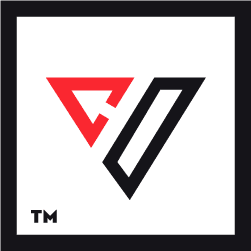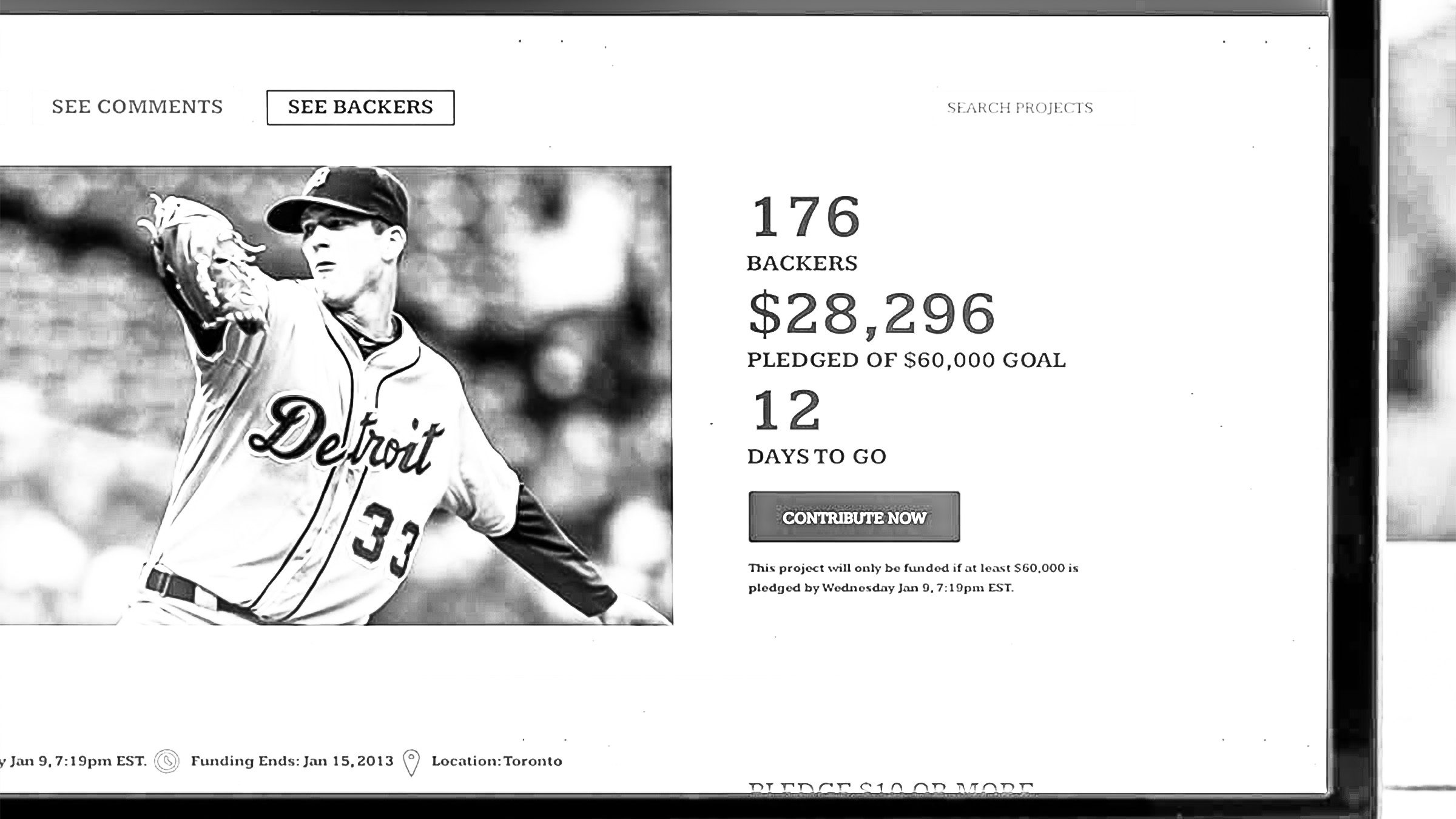As a branding agency in the fitness industry, we understand the importance of having a strong brand identity and strategy to stand out in a crowded market. This blog post will discuss five powerful brand strategy tools to leverage your fitness brand and increase your market share. From a brand audit to a value map, these tools will help you develop a strong brand personality and create a unique position in the industry.
Let’s jump right in!
Think Like a Marketer
Let’s face it. You’ve heard it thousands of times across different channels: LinkedIn posts, Youtube videos, newsletters, and literally in every spot where people share marketing tips. But what does “Think like a marketer” means? Has anyone told you how to do it?
Thinking like a marketer is chasing long-term goals for your brand. However, some companies only focus on the short-term activation of their marketing efforts. Yet they have a wide range of reasons to do that.
From a business standpoint, running marketing campaigns involves a shedload of money for companies. With that in mind, they have fair reasons to focus on short-term activation since that’s how they measure success.
Nothing against how some brands visualize growth rates, but there’s more to pay attention to besides quick and easy wins in a business world that is evolving as fast as social media trends and customer segments.
For example, some fitness brands are all about increasing revenue and customer acquisition. This translates into gym directors endlessly striving to increase sales and lifting their club’s monthly memberships. Still, they need to pay more attention to the nitty-gritty of brand development to guarantee sustainable growth.
The above may ring a bell. Perhaps you’re brainstorming how to develop an innovative brand strategy to build customer retention or boost ROI with your brand management team. You name it— the fitness industry has a limitless roster of pain points.
That’s when you need to think like a marketer.
Simply put, you need to be a data-driven individual, tap into marketing tools (brand research, statistics, swot analysis, and case studies), keep tabs on the competition, develop a never-ending innovative approach to your industry, and align with your customers’ needs.
Brand managers know precisely what thinking as a marketer means. It implicates everlasting growth pursuit. It’s hard, money-shedding, and sometimes disappointing because we try to connect with REAL people, their emotions, and their needs. Even though you reach a point in your growth path where you feel in control —there isn’t an ultimate formula to get customer or brand loyalty.
In the fitness industry, thinking like a marketer and understanding your target audience is essential.
Now, let’s dig up specific tools to safeguard you in hard times.
What’s a Brand Strategy Tool?
A brand strategy tool is a process or framework that helps you develop a strong brand strategy.
Answer: What is your company’s strategy to be top-notch and thriving in your market?
You could answer it by intuition. In my experience as a branding expert, many individuals evolve so well alongside their businesses that they —believe it or not—develop a powerful instinct to thrive in a sea of competitors.
Unfortunately, not even a powerful intuition can handle sustainable growth in the business world. You need a plan.



Brand Strategy
Start your digital journey today!
That’s when a brand strategy comes in. What’s your vision for your profitable business in ten years? What’s your long-term goal? Do you really want to create a brand?
Great businesses may last long, but great brands achieve sustainable growth. Yet growth is not casual.
A great example just sparked. There’s always a well-known gym in town sustained by hard work, time, and great stories over decades. That business is big on customer retention and attracting new consumers.
How could we explain that from a branding perspective? We can learn a whole lot from these sorts of unusual examples. That gym is rooted in the founder’s vision: I love fitness and the iron culture, and I want people to join this club and get rid of a whole lot of stress after a work shift and improve their lives.
Not to mention that person has motivated enthusiastic people to reach their fitness goals year after year.
Inspiring.
This isolated example is what I call successful organic businesses since they have survived the aggressiveness used by big industry fishes to dominate the fitness market.
Think like a marketer now: Is that successful gym a great brand?
The answer is no. Reason? Who else knows that gym out of town? Has it developed a strategy to build brand awareness? No.
Second thought: What are the chances of that gym thriving if we move it from Florida to Phoenix?
Brand awareness is key to connecting with your target market. For example, Crunch Fitness, a well-known brand, owns almost eighty facilities in the United States and offshore. They have sophisticated facilities in many states and even Costa Rica, Central America.
Crafting a brand strategy increases the chances of being one step ahead of competitors. Branding is a game-changer. In fact, branding is about knowing the market so you can make an impact.
As you can see, branding is deeper than chasing money. Last year, Adidas cut ties with Kanye West and reported a $540 M loss — I’m not delving into why now. It’s fair to say, though, Adidas made such a hard decision because his partnership with Mr. Ye —considered the best contemporary rapper — was just unsustainable because Mr. Ye was not aligned with Adidas’ core values anymore. That’s branding:
- Stay true to your values.
- Respect your foundations.
- Be real, although you make a hard decision.
But here’s the thing: Businesses are far different from what they were decades ago, and so is branding.
So, brand strategy tools are designed to help you analyze your brand, create a unique market position, and build long-lasting relationships with your customers.
How Can Branding Tools Leverage Your Fitness Brands?
It’s a no-brainer for brand strategists that these tools can leverage your fitness brand. Brand strategy tools help you create a well-thought-out brand identity that resonates with your target audience. Done right, every tool is designed to help brands find their why, their raison d’être —their reason for being—so it’s a great way to shift your brand purpose or even connect with new audiences.Are you trying to figure out a winner-solution for customer retention? Need to rebrand your business personality? One thing is certain: these powerful tools can do everything, from increasing brand loyalty to driving sales.
The Importance of Brand Strategy in the Fitness Industry
The fitness industry is full of competitors, which translates into numerous challenges to stand out. A strong brand strategy can help you differentiate yourself from competitors and create a unique position in the market. A strong brand strategy can also help you increase customer loyalty and drive sales.
5 Powerful Brand Strategy Tools to Leverage Your Fitness Brand
1. Brand Audit
In short, a brand audit is a checkup of your brand. It assesses your brand positioning in the market, strengths, and weaknesses, as well as possible solutions to overcome your brand’s pain points. Strong brands use it to leverage their brand image, putting a bit of makeup —if needed—on the brand story, tailoring brand voice, and delivering sheer joy to their audiences.
Not to mention a brand audit is a health checkup of your internal culture. Is your brand well-integrated internally and externally? Is it a cohesive brand? Are actions aligned with its message? The last thing you want is a brand strategy that delivers joy to customers and hard times to employers and high-hierarchy staff.
With that in mind, consider Stephen Greyser, a prestigious branding professor at Harvard who developed The Brand Identity Matrix.
Well used, this helpful instrument has resolved major problems of worldwide brands such as IKEA, Maersk, the Nobel Organization, etc. It highlights three key factors:
Internal elements
Brand mission, vision, culture, and competencies.
Key questions:
- What engages and inspires my employees and me?
- What direction is my brand moving forward?
- What’s my work ethic? Does it need improvement?
- What are my unique and distinctive capabilities?
External elements
Value Proposition, Outside Relationships, and Positioning.
Key questions:
- What’s my value promise to my ideal consumer? Is it the same compared to ten years ago?
- Is my brand interested in creating a culture among consumers? Is it looking for mere transactional relationships or dynamic, authentic, long-lasting relationships?
- Where is my brand vs. competitors in the marketplace?
Bridging elements
Brand Personality, Communication Methods, Brand Core
Key questions:
- What’s my approach to my audience and consumers? Does my brand strategically employ captivating customer traits? What’s my brand’s personality?
- Where’s my audience? On TV ads, Social Media, Email, or Public Events?
- What’s my ethos? What’s THAT THING my brand stands for and never negotiates? Does my brand just trade products for money? Do I want to improve consumers’ lives with my product/service?
Overall, a brand audit helps you identify room for improvement and growth opportunities. It assists you in clearly understanding your target audience and creating a unique position in the market.
2. Service Map
A service map visually represents your company’s services and the customer journey. It includes all the elements of your customer experience, from the initial contact to the final purchase.
A service map can help you identify areas where you can improve the customer experience and create a stronger emotional connection with your target audience. By mapping out the customer journey, you can identify areas where customers may experience friction or confusion and develop solutions to address those issues.
3. Positioning
Positioning is a great branding tool to understand your current position in the marketplace. But that’s not quite it. Brand positioning helps you create a unique selling proposition and develop a brand personality that resonates with your target market.
Moreover, positioning helps you differentiate your brand from the competition and create a strong emotional connection with your target audience. If you are a fitness industry veteran, consider creating a unique position to boost customer loyalty and drive sales.
KPIs you’ll need to consider: Pricing, quality, market share, and customer satisfaction.
4. Road Map
When running a brand strategy, use road maps to carve out a straightforward plan that outlines the steps needed to achieve your vision. Ideally, it should include specific goals, timelines, and actionable items, from planning advertising to delivering customer experience.
For the most part, strong brands designate brand management teams to work on specific areas of their strategies. They use road maps to align thought leaders, marketers, graphic designers, and writers working to develop a brand that connects with consumers’ needs. Furthermore, road maps help you stay focused on your brand strategy and track performance over time. It can also aid in identifying new opportunities and adjusting your strategy as much as needed.
Key questions:
- What is your brand promise?
- What is the strategy to honor your promise?
- What is the story behind your brand?
- How is your brand innovating the market?
- What’s the ideal customer experience your brand wants to deliver?
5. Value Map
Developing value maps involves commitment and self-awareness. Setting out brand values consolidates the foundation of your brand. Note that consumers will pay attention to the values you promote. Yet, they will assess your coherence based on your brand values, and it’s fair to say your value map will be highly correlated to your brand reputation.
You must work on brand coherence to make your name in the market. For example, if your brand claims to be eco-friendly, your products should be manufactured with biodegradable products. If your narrative is fitness positivity, your gym must be a safe place for your members.
Simply put, your making-sense-ability will rely on your values. With that in mind, ensure all your brand strategist work hand in hand with high-hierarchy staff, marketers, and other professionals to develop a well-integrated brand identity.
Remember that value maps are the product of an in-depth analysis of the benefits, and the emotional connection brands create with consumers.
Done right, value maps will improve your brand messaging, help you resonate with your target audience, and drive sales.
Work with Us!
Finally, these brand strategy tools may seem difficult to use at first glance, yet you’re not alone. At Creatitive, our branding experts will dedicate high-quality time, grit, and passion to leveraging your brand strategy.
We promise to treat your brand as ours. Contact us, and start a new project together!



Brand Strategy
Start your digital journey today!
FAQ
What’s the difference between marketing strategy tools and branding strategy tools?
Marketing strategy tools are designed to promote and sell products or services, while branding strategy tools are resources to create a brand strategy systematically. That way, you’ll be able to beat the competition. While both types of tools are important, branding strategy tools are essential for creating high-quality relationships with consumers and attaining sustainable growth.







